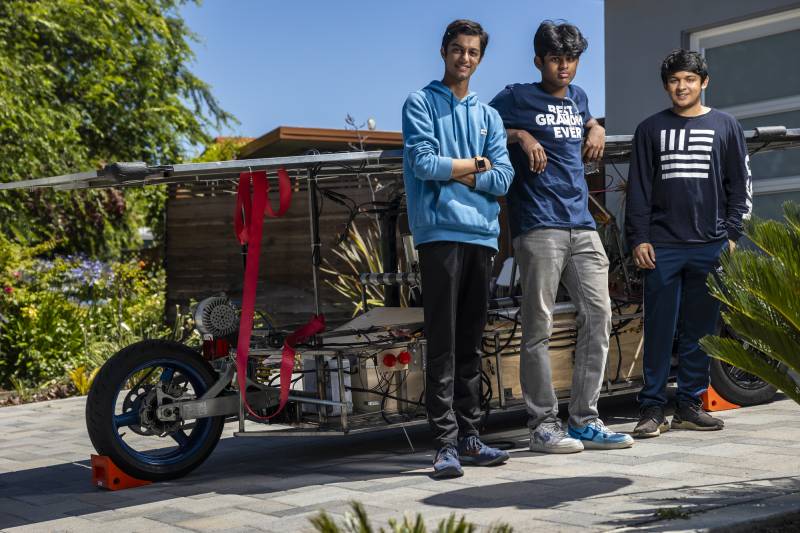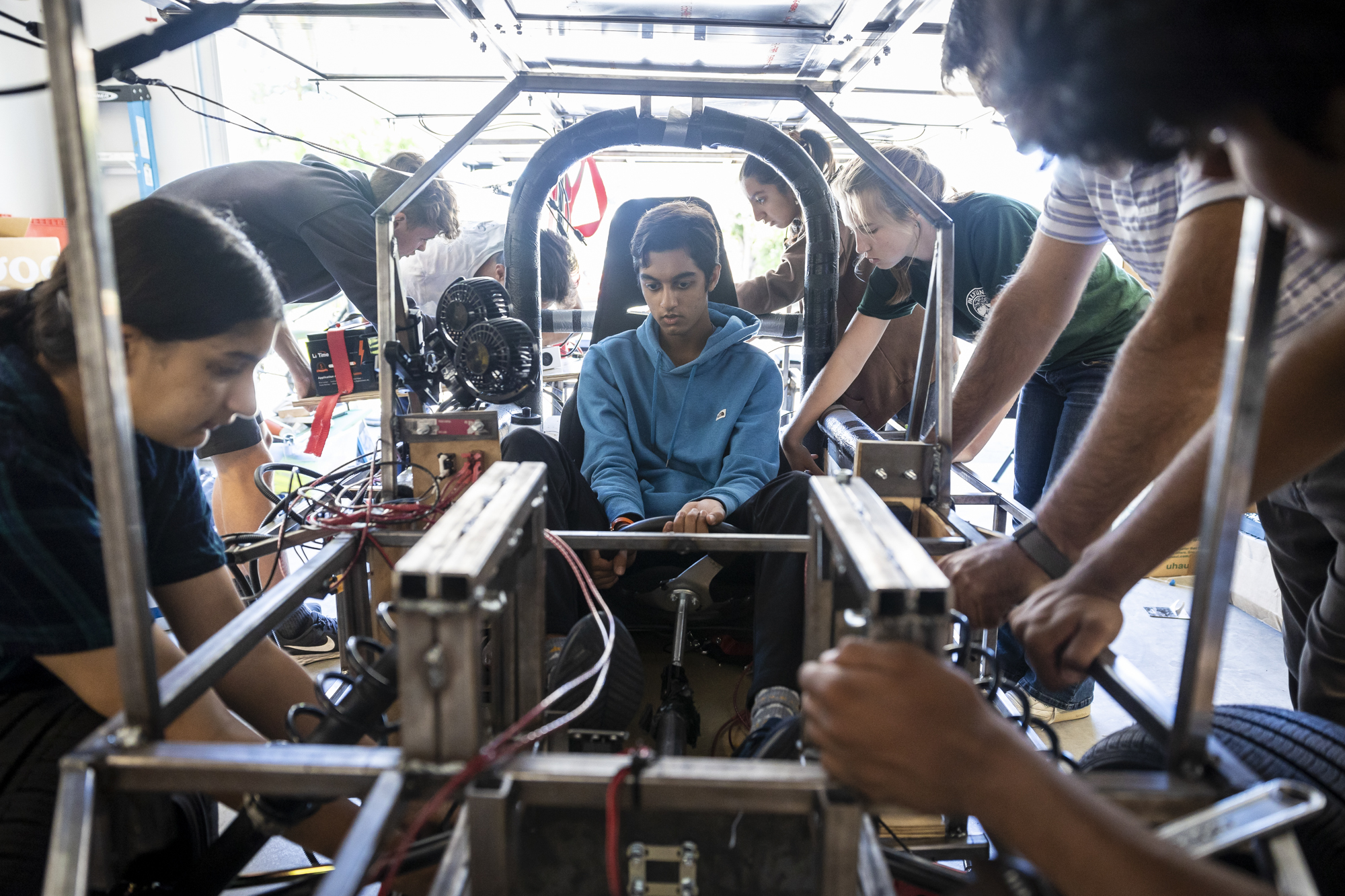Editor’s Note: A day after the publication of this story, KQED learned that the Palo Alto High School team decided not to compete in the Solar Car Challenge. The team had been preparing for the event for nearly a week in the Texas heat at triple-digit temperatures. Program director Rupa Chaturvedi said she thought driving six hours a day in those conditions would be too dangerous for the kids. “We’re super happy that we were able to produce a roadworthy car, but pushing the limits, based on the weather conditions didn’t make any sense,” she said.
As of Sunday, Palo Alto High School and 19 other student-led teams have embarked on an eight-day, 1,400-mile trip for the 30th annual Solar Car Challenge. Students from across the country built roadworthy solar cars and are driving them on freeways from the starting point in Fort Worth, Texas, to Palmdale, California.
The Palo Alto team, made up of 13 sophomores and juniors, spent six months building their car, which they’ve named “The Beast.” At the end of each school day, students would meet at an off-campus workshop to design, weld and tinker. The work typically involved late nights to problem-solve.
“I never thought we’d actually make a whole car,” said Alice Jambon, 16, the project’s build lead. “And when we saw it finally run perfectly, it was mind-blowing, honestly.”

